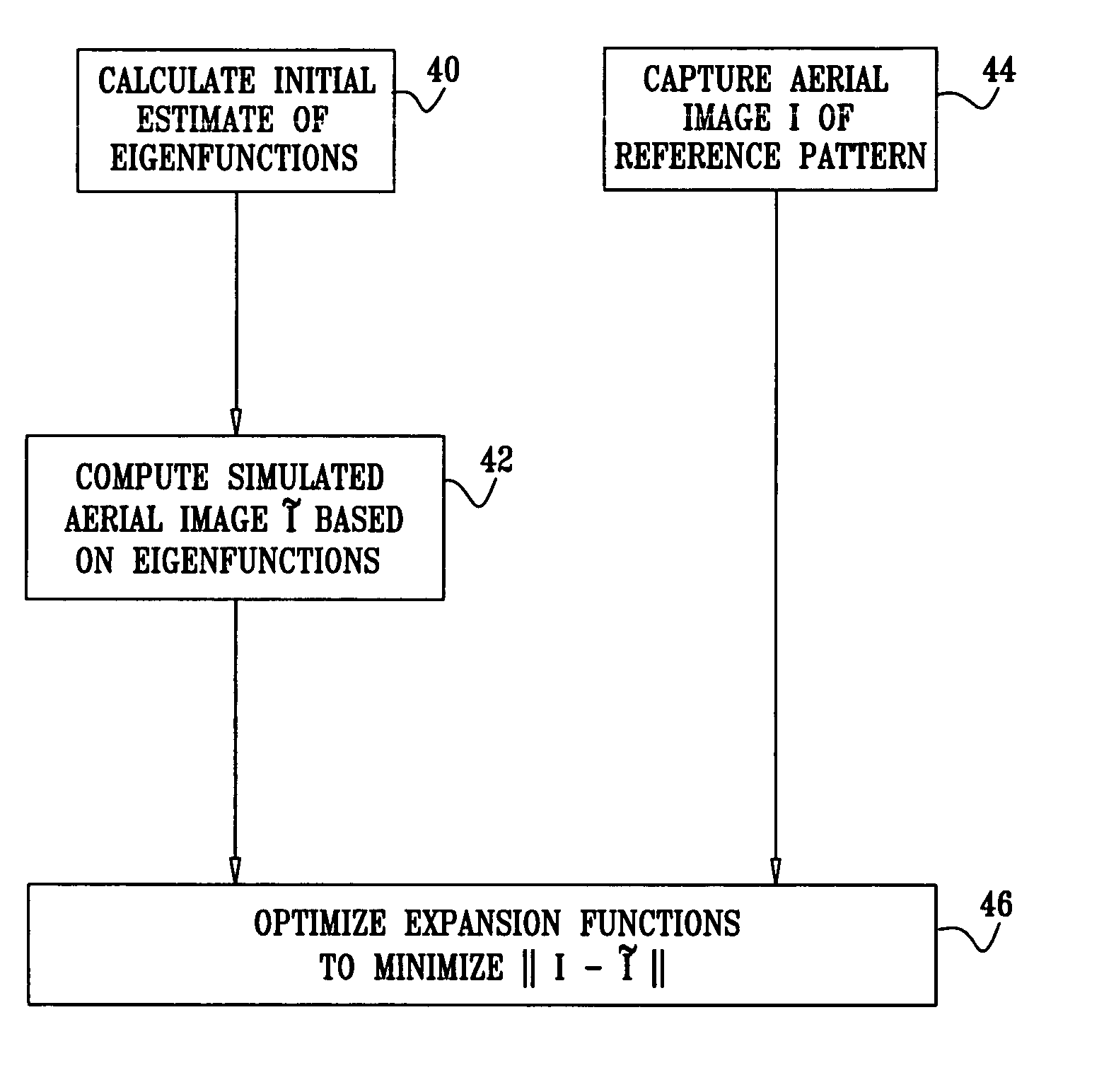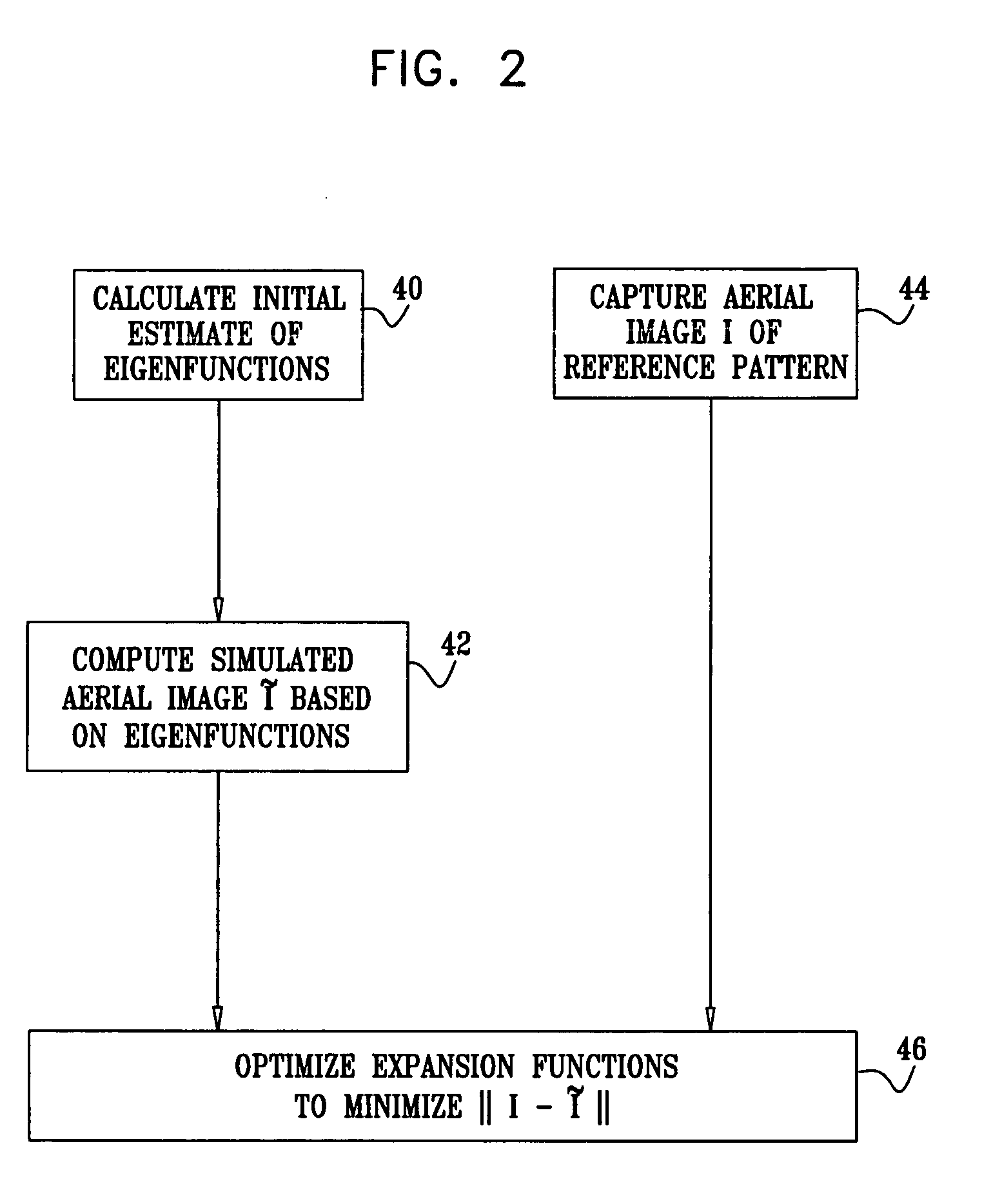System and method for simulating an aerial image
a technology of aerial image and simulation method, applied in the field of photolithography, can solve the problems of significant differences between actual and simulated images, and the actual projection system may vary
- Summary
- Abstract
- Description
- Claims
- Application Information
AI Technical Summary
Benefits of technology
Problems solved by technology
Method used
Image
Examples
Embodiment Construction
[0034]FIG. 1 is a schematic side view of a system 20 for projection of a mask 22 onto a target plane 24, in accordance with an embodiment of the present invention. Typically, mask 22 embodies a predetermined design for a thin film layer that is to be formed by photolithography on a substrate at plane 24, as is known in the art. The design is characterized by a complex transmission function g({right arrow over (x)}). Alternatively, system 20 may be used in projection of patterns of other types. As noted above, the term “mask” should be understood to comprise substantially any sort of object carrying a pattern that can be projected in this manner onto a target plane. Furthermore, the principles of the present invention may also be applied in projection systems that are based on reflection of radiation from mask 22. For example, these principles may be applied in measuring devices based on optical microscopy systems, which are used in metallurgy and other fields.
[0035] System 20 compr...
PUM
 Login to View More
Login to View More Abstract
Description
Claims
Application Information
 Login to View More
Login to View More - R&D
- Intellectual Property
- Life Sciences
- Materials
- Tech Scout
- Unparalleled Data Quality
- Higher Quality Content
- 60% Fewer Hallucinations
Browse by: Latest US Patents, China's latest patents, Technical Efficacy Thesaurus, Application Domain, Technology Topic, Popular Technical Reports.
© 2025 PatSnap. All rights reserved.Legal|Privacy policy|Modern Slavery Act Transparency Statement|Sitemap|About US| Contact US: help@patsnap.com



